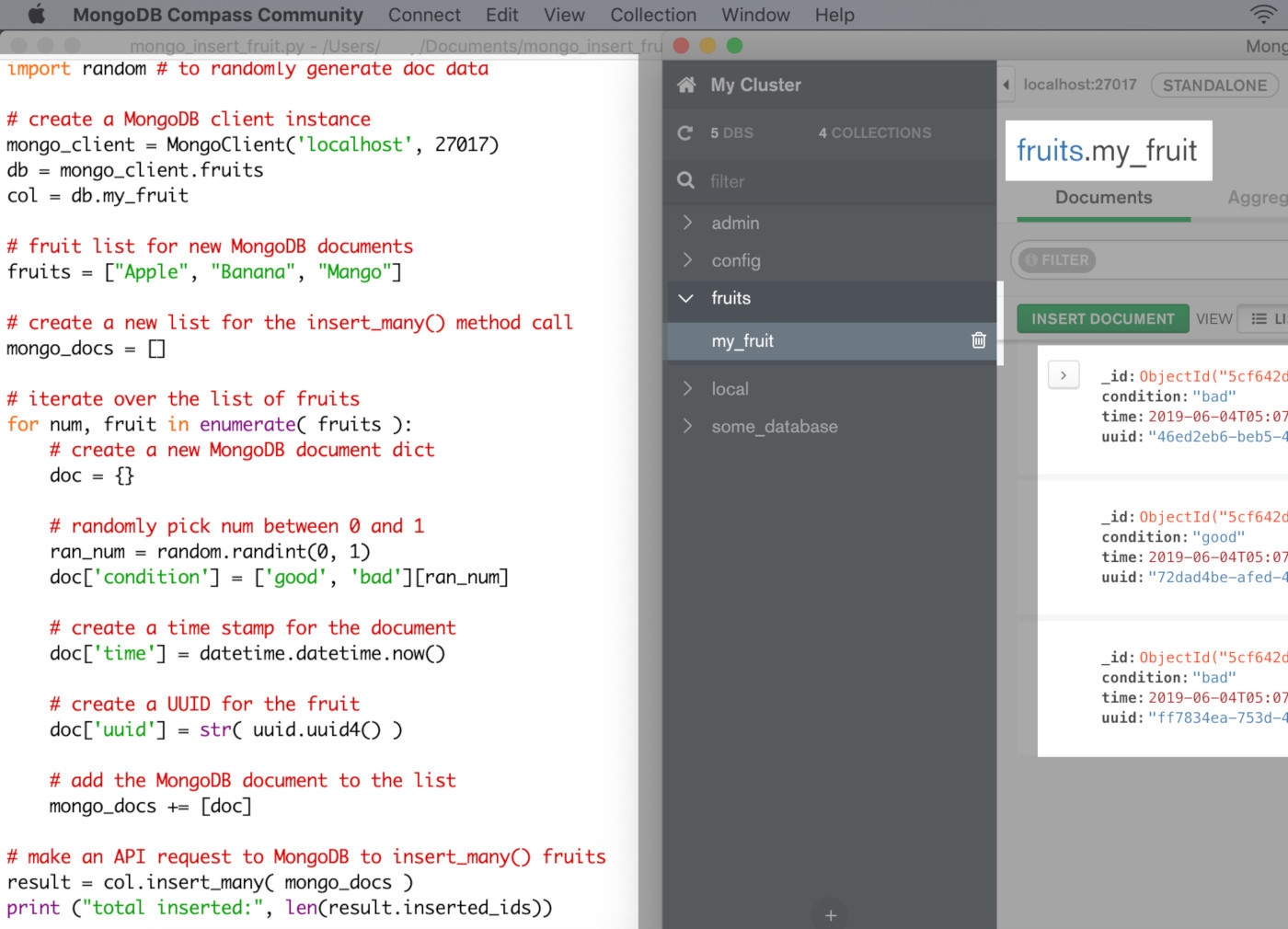
append ( str ( user )) max_users = " and ". users = for user, num_complete in top_users : if num_complete < max_complete : break users. max_complete = top_users # Create a list of all users who have completed # the maximum number of TODOs. items (), key = lambda x : x, reverse = True ) # Get the maximum number of complete TODOs. todos_by_user ] = 1 # Create a sorted list of (userId, num_complete) pairs. todos_by_user ] += 1 except KeyError : # This user has not been seen. for todo in todos : if todo : try : # Increment the existing user's count.

# Map of userId to number of complete TODOs for that user todos_by_user = # Increment complete TODOs count for each user. Simple Python objects are translated to JSON according to a fairly intuitive conversion. There is also a dumps() method (pronounced as “dump-s”) for writing to a Python string. Accordingly, the json library exposes the dump() method for writing data to files. What happens after a computer processes lots of information? It needs to take a data dump. Think of it like this: encoding is for writing data to disk, while decoding is for reading data into memory. But in reality, all we’re talking about here is reading and writing. Naturally, deserialization is the reciprocal process of decoding data that has been stored or delivered in the JSON standard.ĭefinitely. You may also hear the term marshaling, but that’s a whole other discussion.
#Python json query by date series#
This term refers to the transformation of data into a series of bytes (hence serial) to be stored or transmitted across a network. The process of encoding JSON is usually called serialization. Keep in mind, JSON isn’t the only format available for this kind of work, but XML and YAML are probably the only other ones worth mentioning in the same breath. Yup, you got it! It’s nothing more than a standardized format the community uses to pass data around. So, we use JSON to store and exchange data? Have no fear, fellow Pythoneers and Pythonistas. Luckily, this is a pretty common task, and-as with most common tasks-Python makes it almost disgustingly easy. One way or another, you’re up to your neck in JSON, and you’ve got to Python your way out. Perhaps you’re gathering information through an API or storing your data in a document database. Chances are you’re here because you need to transport some data from here to there. Since its inception, JSON has quickly become the de facto standard for information exchange. Watch it together with the written tutorial to deepen your understanding: Working With JSON Data in Python You can use whichever library suits your personal needs, or in the case of requests and Flask, might not even have to import a specific JSON library.Watch Now This tutorial has a related video course created by the Real Python team. There are many different solutions to working with JSON in Python, and I've shown you just a few examples in this post. It turns the JSON output into a Response object with the application/json mimetype. This function wraps dumps() to add a few enhancements that make life easier. Both args and kwargs: Behavior undefined and will throw an exception.Multiple keyword arguments: Converted to a dict before being passed to dumps().

Multiple arguments: Converted to an array before being passed to dumps().Single argument: Passed straight through to dumps().Per the Flask docs, the jsonify function takes data in the form of: Run the file with python app.py, and then visit in your browser to see the JSON data. In this example the data we're returning is just hard coded, but you can replace this with data from any other source. In this function, we are pretending to respond with the Astronomy Picture of the Day. In this code, we have a route named /apod, and anytime a GET request is sent to that route, the apod() function is called. "title": "Orionids Meteors over Inner Mongolia", Follow APOD on: Facebook, Instagram, Reddit, or Twitter", Next month, the Leonids Meteor Shower from Comet Tempel-Tuttle should also result in some bright meteor streaks. An Orionids image featured on APOD one year ago today from the same location shows the same car. Comet Halley is actually responsible for two known meteor showers, the other known as the Eta Aquarids and visible every May.

The featured image shows multiple meteor streaks that can all be connected to a single small region on the sky called the radiant, here visible just above and to the left of the belt of Orion, The Orionids meteors started as sand sized bits expelled from Comet Halley during one of its trips to the inner Solar System. Pictured here, over two dozen meteors were caught in successively added exposures last October over Wulan Hada volcano in Inner Mongolia, China. This was expected, as October is the time of year for the Orionids Meteor Shower. "explanation": "Meteors have been shooting out from the constellation of Orion.


 0 kommentar(er)
0 kommentar(er)
